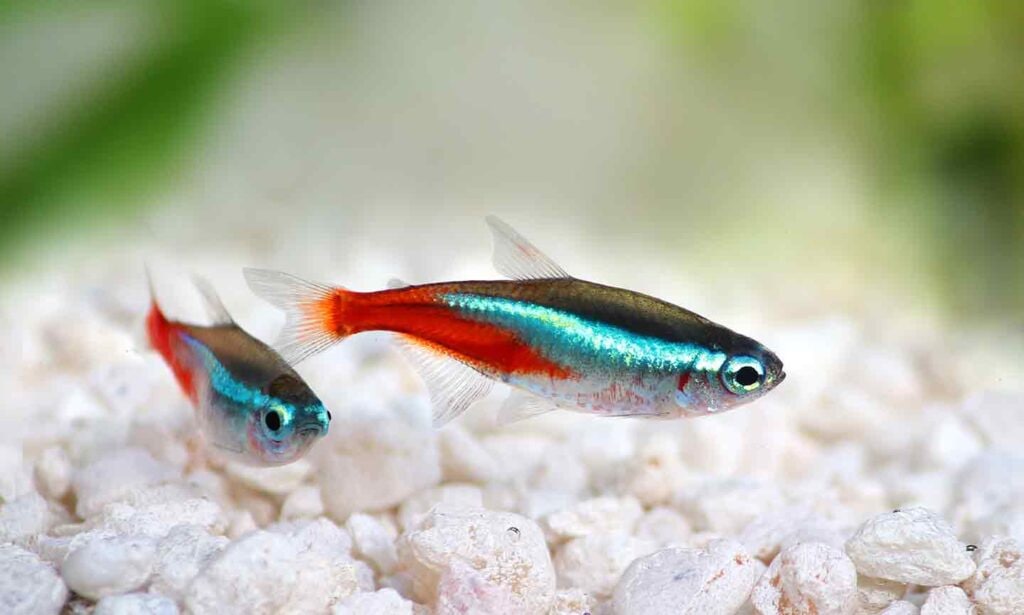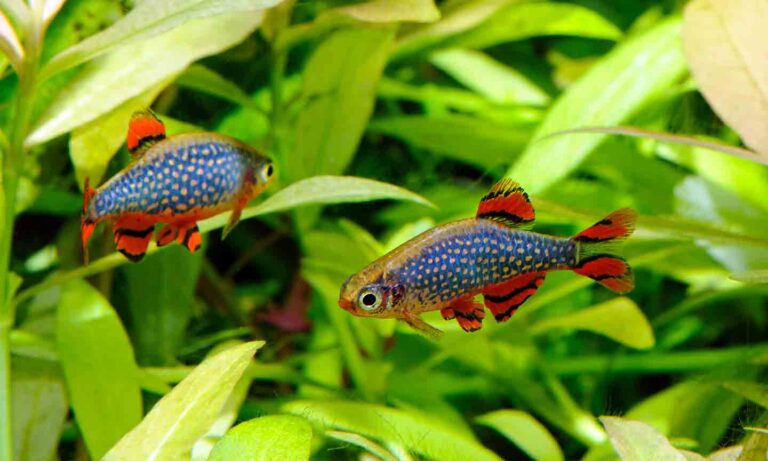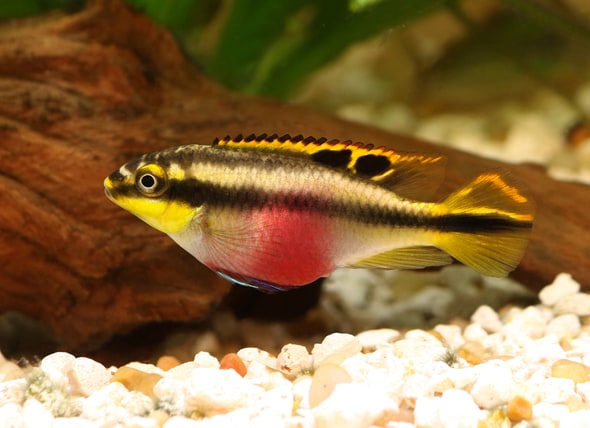If you’re new to the aquarium hobby and looking for beginner-friendly aquarium fish to stock in your first tank, we’re here to help. Inexperienced aquarium hobbyists often find freshwater tanks more affordable to set up and simpler to maintain than saltwater tanks. In this guide, we explore 10 of the most beginner-friendly freshwater pet fish species.
The 10 Best Pet Fish for Beginners
Before purchasing supplies for your new aquarium, you should have an idea what kind of fish you want to keep. The type of fish you choose will influence decisions regarding tank size, equipment, and even decorations.
For example, an aquarium for tropical fish may require an aquarium heater to keep the tank temperature within the appropriate range. Research the ideal water parameters for the new fish you’re considering as well. If your tap water is naturally very soft, for example, fish who prefer hard water (like African cichlids) may not be a good fit.
The best pet fish for beginner aquarium hobbyists are generally hardy, peaceful by nature, and relatively undemanding in terms of care requirements. Here are 10 vet-recommended fish species.

1Betta Fish
- Scientific name: Betta splendens
- Adult size: 3 inches
- Life expectancy: 3–5 years
- Best tank mates: Active, non-aggressive species
Known for their vibrant colors and unique fin shapes, betta fish are popular pet fish because they can be kept singly in tanks as small as 5 gallons. Betta fish are adaptable to different tank environments, though they do require a heater and filter. While they can be aggressive toward other fish, betta fish are generally docile toward people and are low maintenance.
When shopping for betta fish, it’s important to choose one who appears healthy. Sick fish may exhibit dull coloration, frayed fins, or lethargic behavior. Betta fish kept in filtered displays are less likely to be sick than those stocked in small bowls or cups.
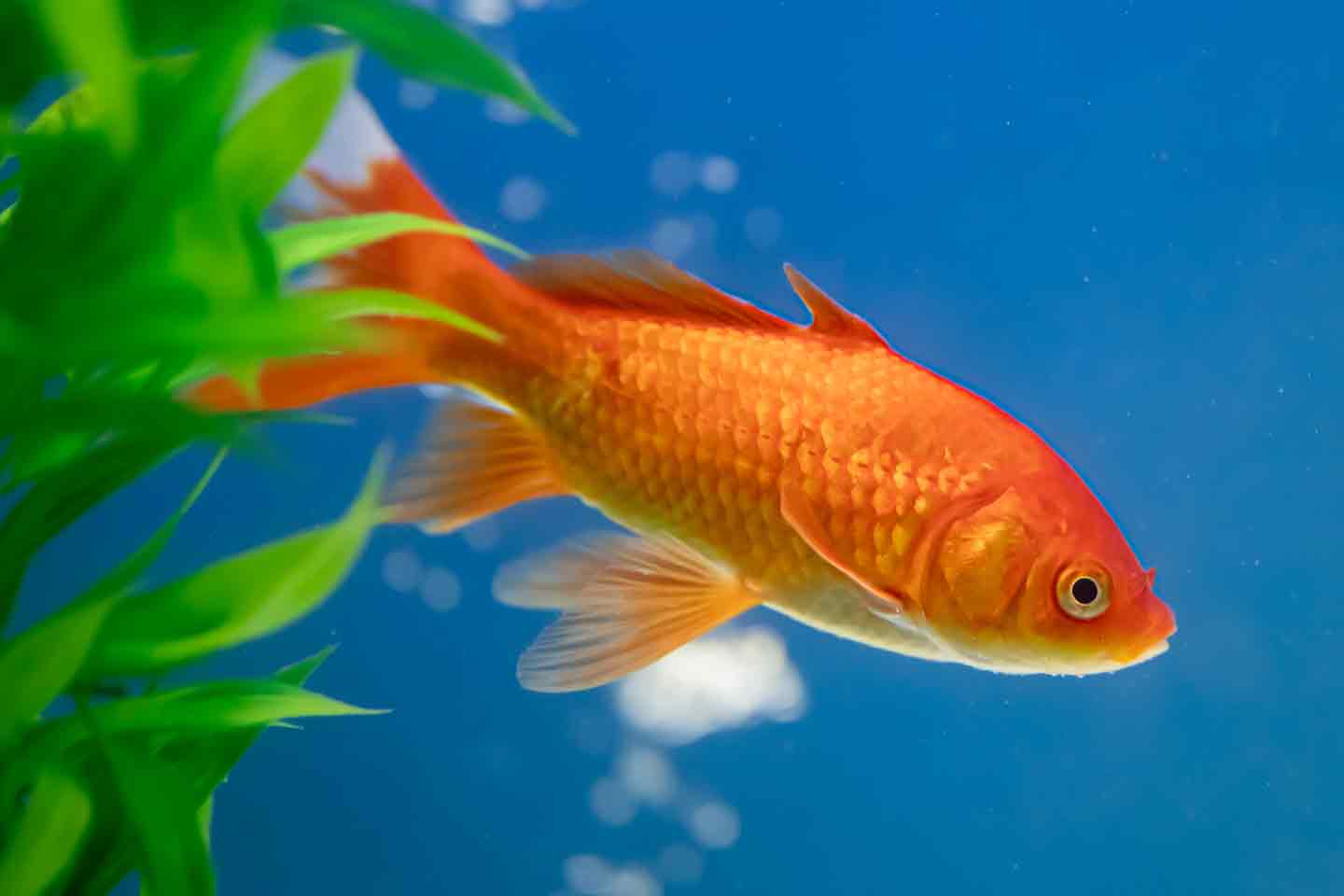
2 Goldfish
- Scientific name: Carassius auratus
- Adult size: 4–14 inches
- Life expectancy: 8–20 years
- Best tank mates: Other goldfish
Goldfish come in an array of colors, patterns, and body shapes. Popular pet varieties include:
- Comet
- Shubunkin
- Fantail
- Oranda
- Ryukin goldfish
Goldfish are generally hardy and adaptable to various tank conditions, including temperature. Indoors, goldfish tanks generally don’t require heaters.
Goldfish are active swimmers and their waste output is fairly high, so they may require larger water volume than similarly sized fish. That said, they don’t require specialized care aside from proper filtration and routine water changes. A minimum tank size of 20–30 gallons is recommended for a single goldfish, though larger varieties or groups of goldfish may require bigger tanks.
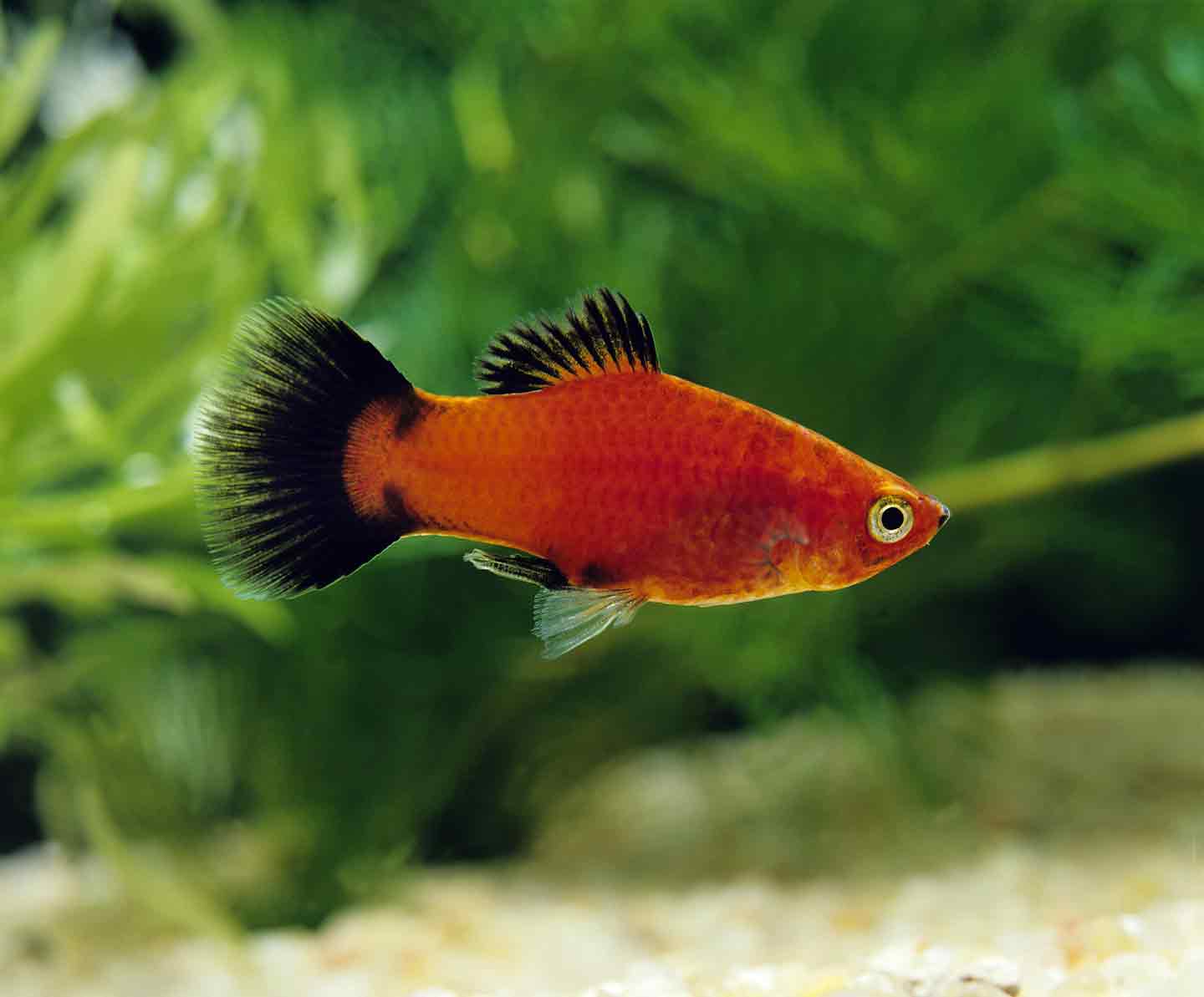
3 Livebearers
- Scientific name: Various
- Adult size: 1–5 inches
- Life expectancy: 5–7 years
- Best tank mates: Peaceful community fish
Popular for freshwater community tank setups, livebearers are some of the easiest fish for new aquarium hobbyists to keep. In contrast with many fish, livebearers give birth to live fish instead of laying eggs. Examples include guppies, mollies, swordtails, and platys.
Livebearers are beginner-friendly because they generally remain small and get along well with other fish of similar size and temperament. They come in a wide array of colors and look attractive in large groups.
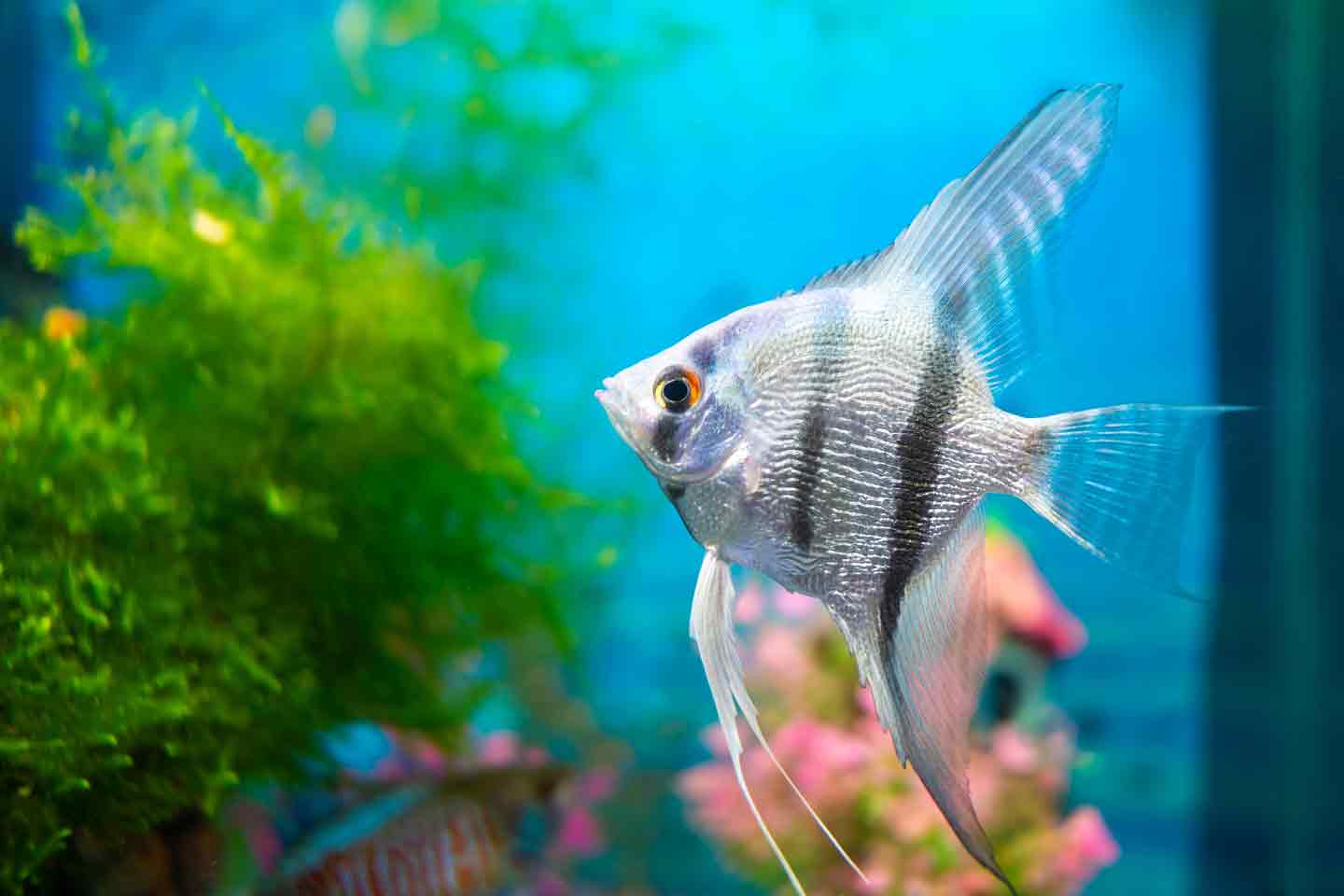
4 Angelfish
- Scientific name: Pterophyllum sp.
- Adult size: 4 inches
- Life expectancy: 10–15 years
- Best tank mates: Peaceful community fish
Native to tropical South America, freshwater angelfish belong to a small genus in the cichlid family. Angelfish are one of the most popular cichlid species, known for their unique shape and striking appearance. Most angelfish available in the aquarium trade are captive-bred, so they’re adaptable to various tank environments.
Angelfish do best in planted tank setups with other peaceful tropical species who won’t nip at their fins. Tank depth is very important for this species, as their fins can measure as much as 6 inches tall or greater at maturity.
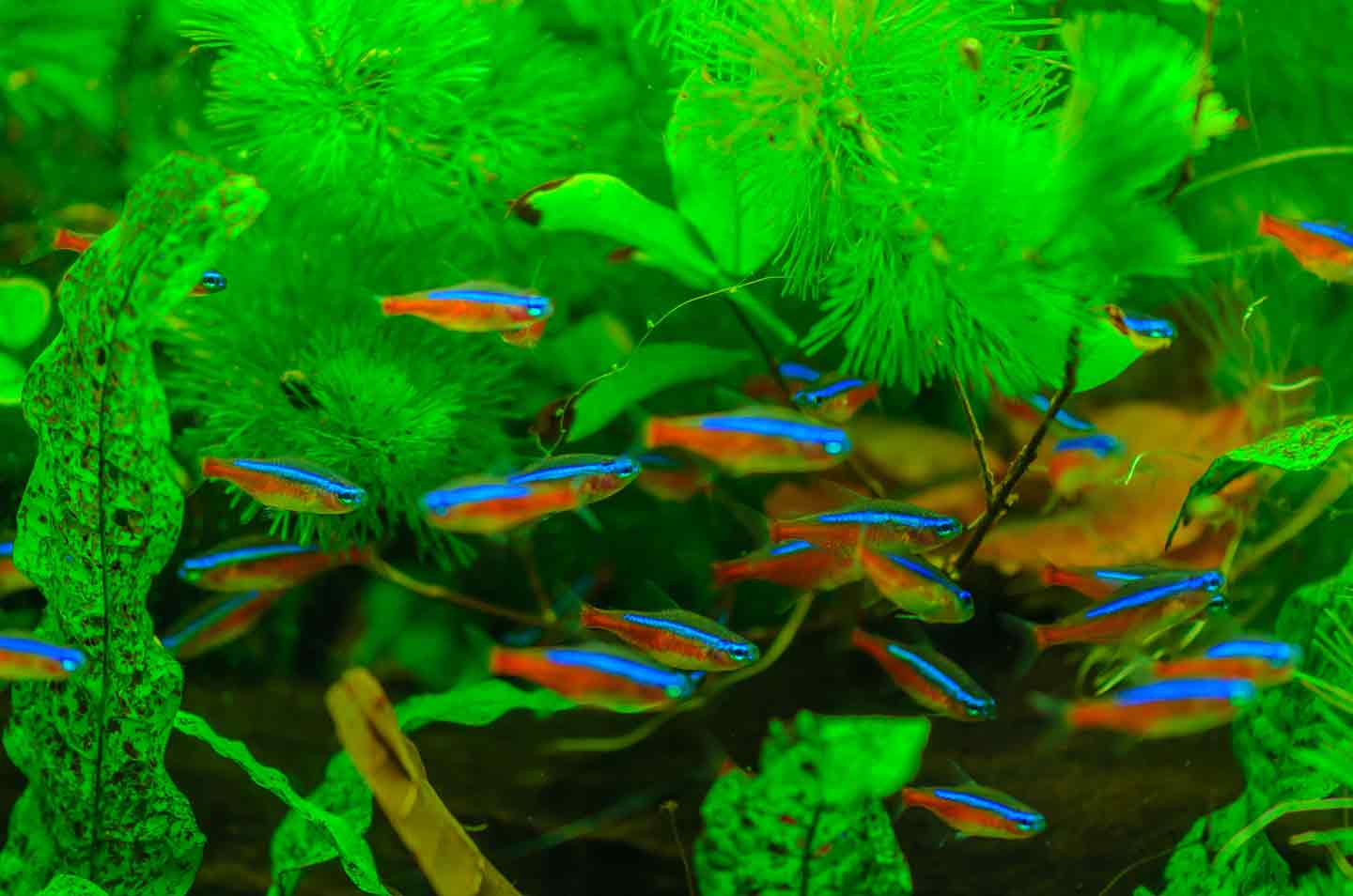
5 Tetras
- Scientific name: order Characiformes
- Adult size: 1–3 inches
- Life expectancy: 2–5 years
- Best tank mates: Peaceful community fish
The name tetra applies to over 1,000 fish species. Members of the scientific order Characiformes, tetras are generally small, brightly colored schooling, or shoaling fish who do well in tropical community tanks. They can add a burst of color and vibrant activity to a community tank, and they’re generally easy to keep.
Popular tetra species include:
- Neon tetra (Paracheirodon innesi)
- Cardinal tetra (Paracheirodon axelrodi)
- Black skirt tetra (Gymnocorymbus ternetzi)
- Ember tetra (Hyphessobrycon amandae)
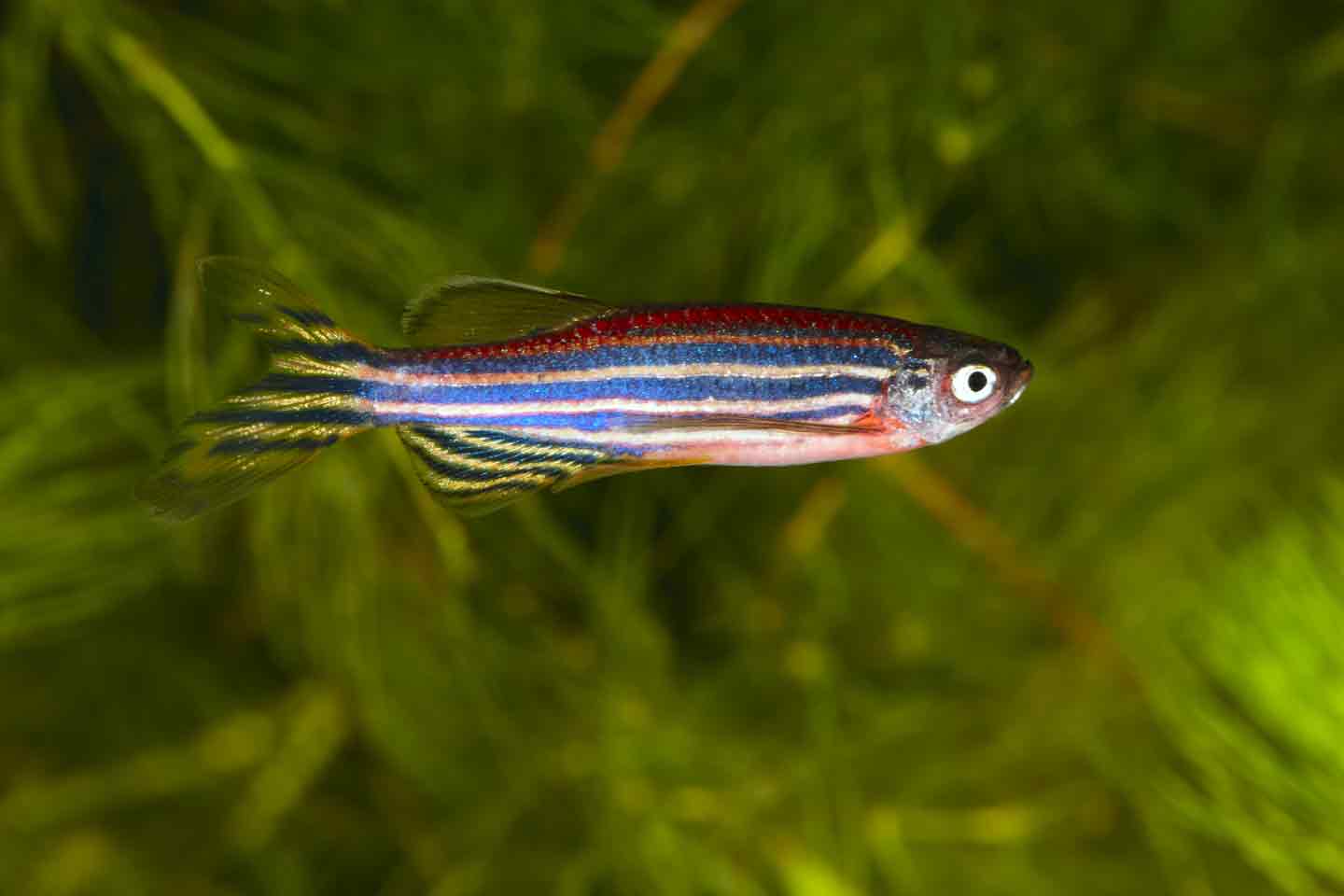
6 Danios
- Scientific name: Danio sp.
- Adult size: 1.5–5 inches
- Life expectancy: 3–5 years
- Best tank mates: Peaceful community fish
Like tetras, danios are small, peaceful community fish who do best in groups with at least six of their own kind. Popular danio species include:
- Zebra danio (Danio rerio)
- Rose danio (Danio roseus)
- Pearl danio (Danio albolineatus)
- Spotted danio (Danio nigrofasciatus)
Danios also come in longfin and GloFish® varieties. Danios are particularly beginner-friendly in that they’re adaptable to slightly lower temperatures than many tropical fish, and they tend to accept a wide variety of commercial foods.
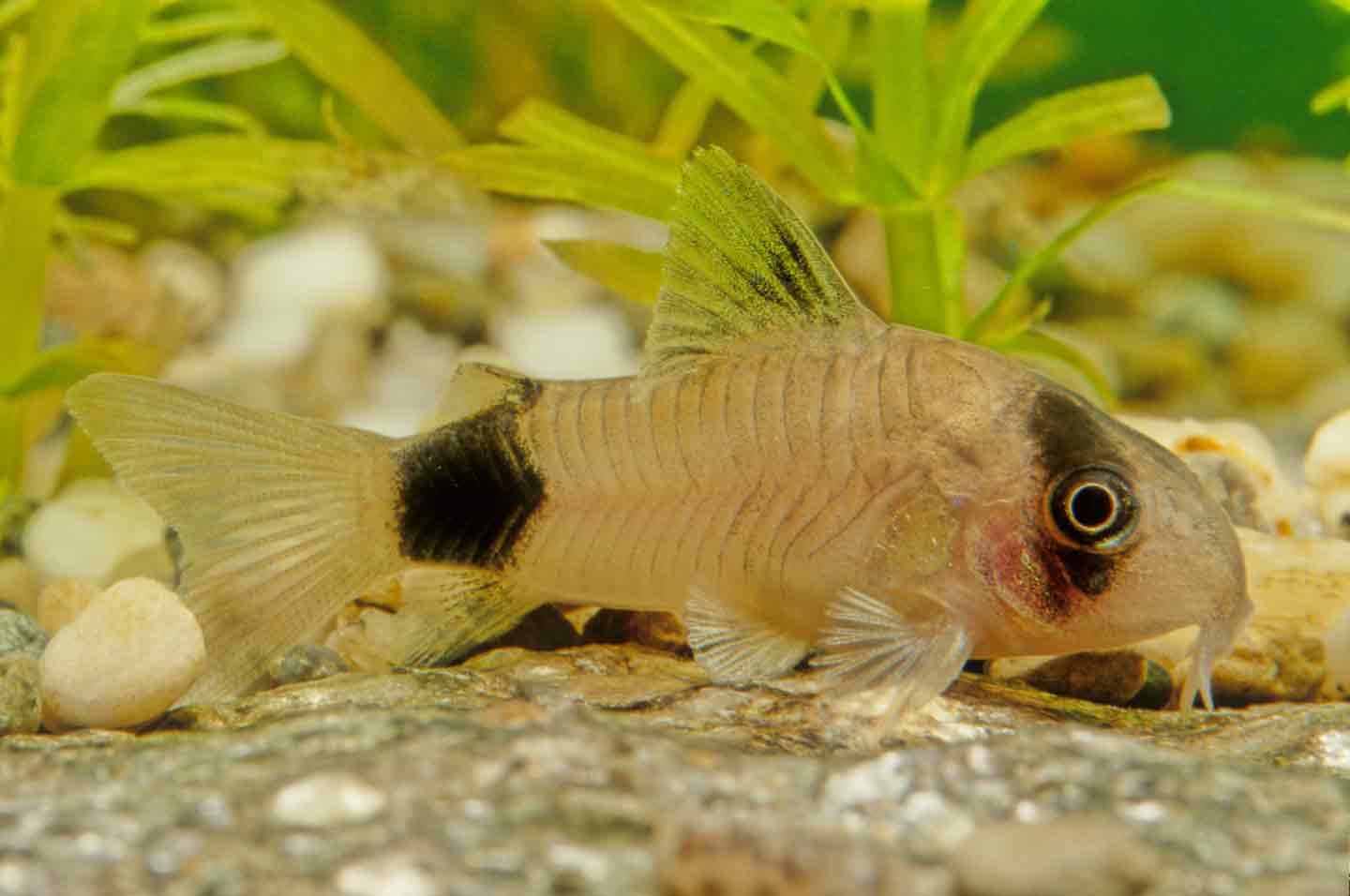
7 Corydoras Catfish
- Scientific name: Corydoras sp.
- Adult size: 1–4 inches
- Life expectancy: 3 years or more
- Best tank mates: Peaceful community fish
Bottom-feeders like corydoras catfish help maintain high water quality by consuming uneaten fish food so it doesn’t break down. Corydoras are particularly beginner-friendly, because they are non-aggressive and easy to care for. They’re best kept in planted tanks with fine substrate they can sift through without damaging their sensitive barbels—the filaments growing from their mouths.
Popular corydoras species include:
- Panda corydoras
- Bronze corydoras
- Peppered corydoras
- Pygmy corydoras
Corydoras catfish get along easily with peaceful community fish and other members of the freshwater cleanup crew, like snails and shrimp.
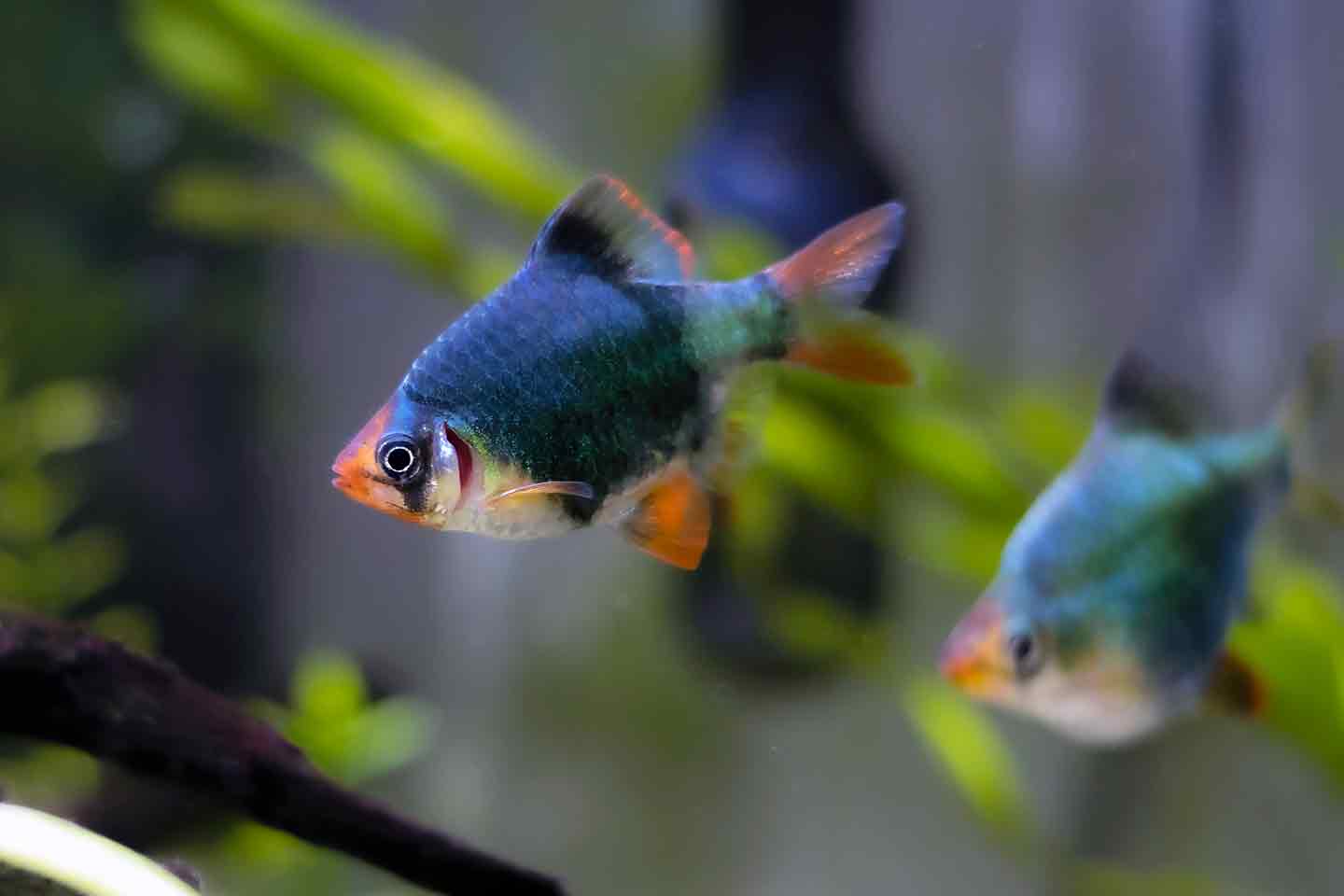
8 Barbs
- Scientific name: family Cyprinidae
- Adult size: 1.5 inches and up, depending on species
- Life expectancy: Up to 15 years
- Best tank mates: Fast-swimming community fish, other barbs
Barbs are small, active freshwater fish who come in an array of colors and patterns. From the vibrant red cherry barb (Puntius titteya) to the orange-and-black striped tiger barb (Puntigrus tetrazona), these fish are beginner-friendly additions to any freshwater community tank.
While barbs are generally hardy and easy to care for, some species are prone to fin nipping. They’re best kept with other fast-swimming fish or in groups of at least five to minimize aggression toward other tank mates.
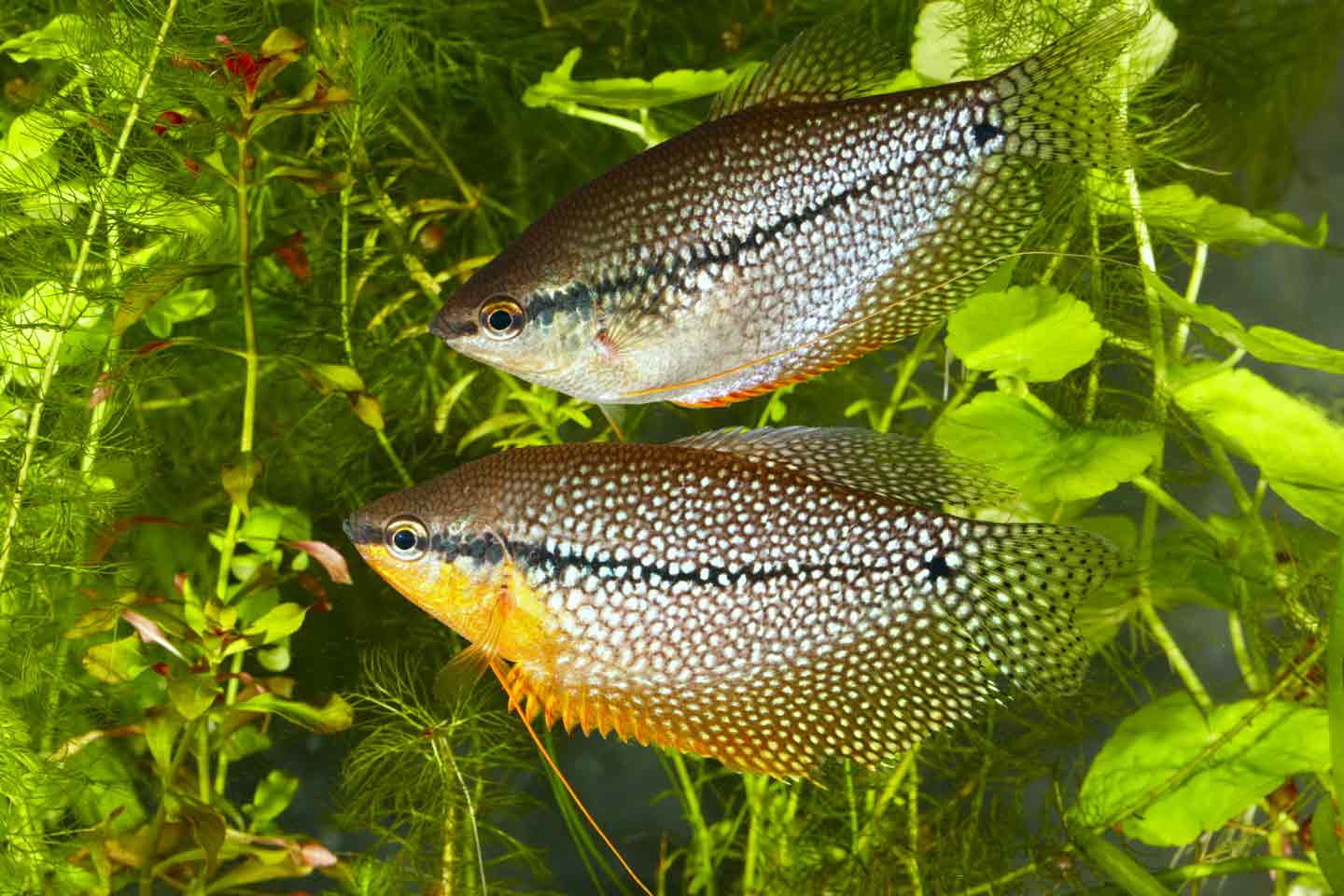
9 Gouramis
- Scientific name: Family Osphronemidae
- Adult size: 1.5–12 inches
- Life expectancy: 7–8 years on average
- Best tank mates: Peaceful community fish
Native to Asia, gouramis come in a variety of colors from gold to silver to blue, often with spots or stripes. Some of the most hardy and beginner-friendly gouramis include:
- Pearl gourami (Trichogaster leeri)
- Honey gourami (Trichogaster chuna)
- Dwarf gourami (Trichogaster lalia)
- Sparkling gourami (Trichopsis pumila)
Gouramis are generally non-aggressive, but males will sometimes fight if the tank is too small. These fish are best kept in tanks 20 gallons or larger with peaceful tankmates.
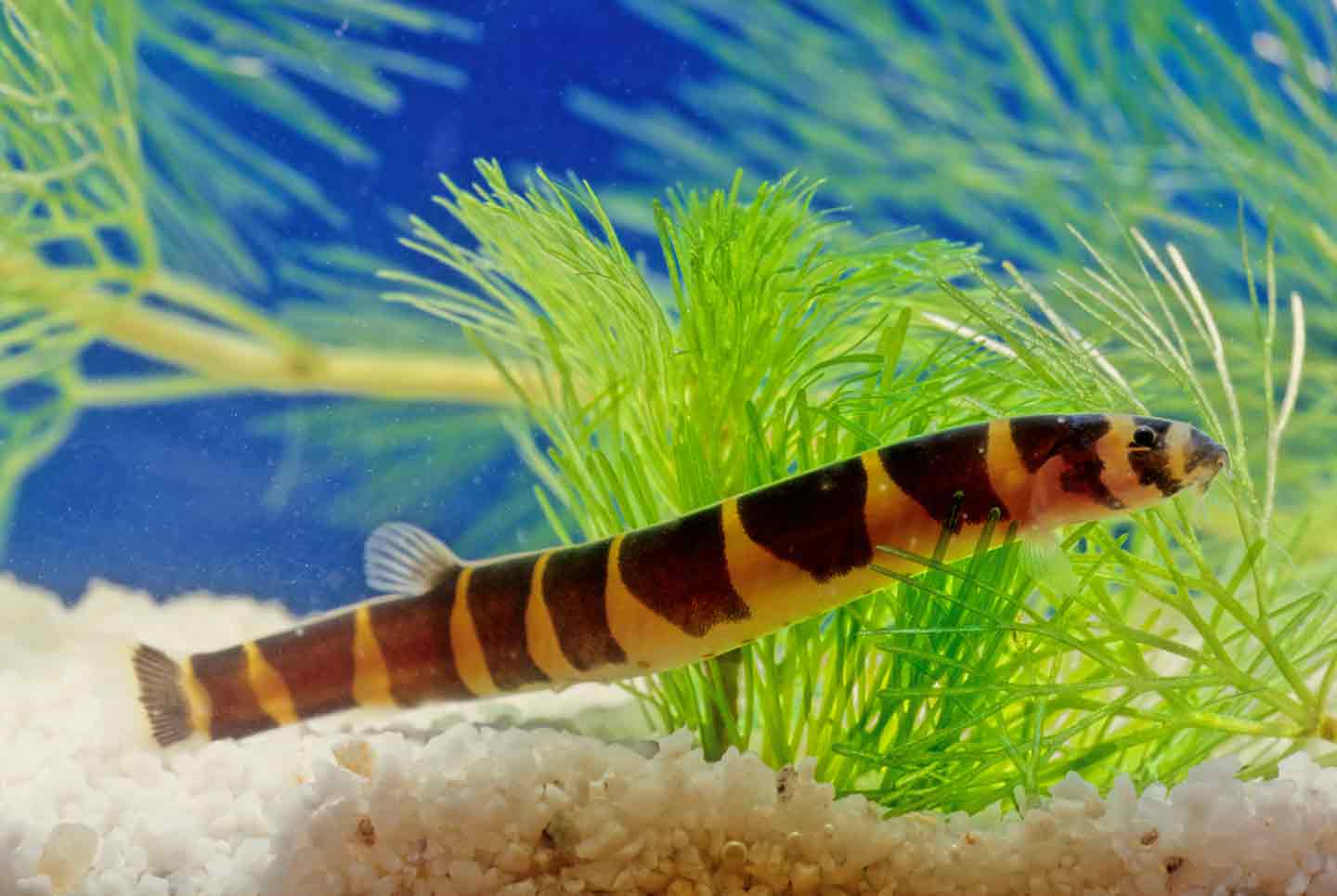
10 Loaches
- Scientific name: Order Cypriniformes, Superfamily Cobitoidea
- Adult size: 3–12 inches
- Life expectancy: 10–15 years
- Best tank mates: Peaceful community fish, other loaches
Peaceful scavengers like corydoras, freshwater loaches are relatively easy to care for. They will help clean up uneaten fish food and may aerate the substrate by digging through it. Popular species include:
- Clown loach (Chromobotia macracanthus)
- Kuhli loach (Pangio kuhlii)
- Yoyo loach (Botia almorhae)
Loaches often exhibit striking colors and striped patterns. They tend to be fairly active and entertaining, especially when kept in sufficiently large schools. Some species will require a large tank if kept in schools.
FAQs About Beginner-Friendly Pet Fish
Q:How long can a pet fish live?
A:“Most pet fish live between 3–5 years,” says Teresa Manucy, DVM, a telehealth veterinarian for Chewy in Jacksonville, Florida, “though some species like goldfish and koi may live a decade or longer.” Larger fish generally live longer than smaller fish, though husbandry and diet are key factors that affect longevity.
Q:How often should you feed a pet fish?
A:Most aquarium fish only need to be fed once or twice a day. Dr. Manucy says, “Only offer what [the fish] will ingest within two to three minutes at a time.” Uneaten fish food will break down in the tank and could negatively affect water quality.
Q:How often should you clean a fish tank?
A:Aquarium maintenance generally doesn’t involve large-scale cleaning, but rather weekly or monthly tasks like water changes and equipment maintenance. Weekly water tests and visual inspections can help you determine when cleaning may be required.
Expert input was provided by Teresa Manucy, DVM, a telehealth veterinarian for Chewy in Jacksonville, Florida.
This content was medically reviewed by Chewy vets.
More About Fish
Share:
